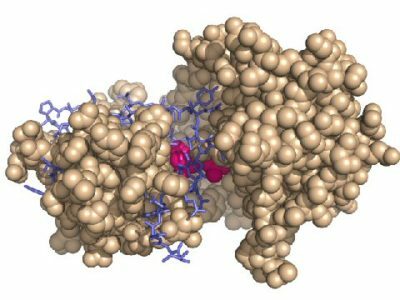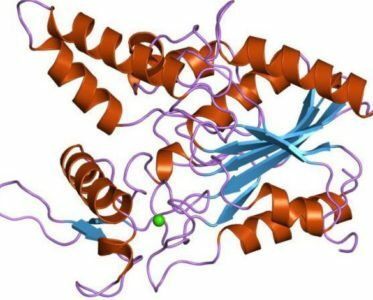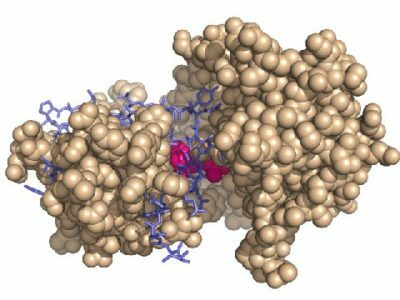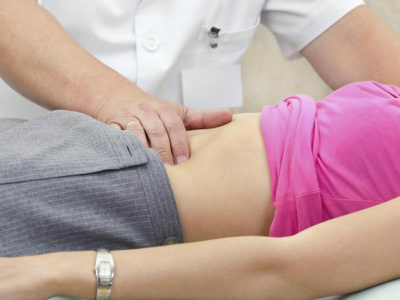2 What is the effect of enzymes?
Secrets activate their activities from the initial portion of the anterior section of the human digestive system. As soon as food enters the mouth, it is immediately affected by saliva, which contains amylase. There is a splitting of high molecular weight starch into small particles of soluble sugars.
For normal decomposition of carbohydrates, a slightly alkaline medium and a temperature index of at least 38 ° C are necessary. Then, after mechanical and chemical treatment, the whole mixture is sent to the stomach, where gastric juice and hydrochloric acid are involved in the decay process.
An important element of gastric secretion is pepsin, which cleaves proteins. There are several types:
- Pepsin A - an enzyme that stimulates the breakdown of proteins of plant and animal origin. It is produced in the cells of the mucous membrane of the organ. Optimal catalytic activity occurs at a pH of 1.5-2.0.Partially absorbed into the circulatory system is about 1%, after which it is filtered in the kidneys and excreted in the urine as uropepsin.
- Pepsin S, which is also called gastricin - a proteolytic secret, reaches a maximum effect at pH 3.0-3.5.Produced by the main cells of the fundal glands of the bottom of the stomach.
- Pepsin B - affects the consistency of gelatin, bringing it into a liquid state. Produces the decomposition of proteins in the connective tissue at pH less than 5.6.If the level of acidity is higher, then the action of the enzyme is inhibited.
- Pepsin D - acts in the presence of calcium ions on the milk caseinogen and converts it to casein, curling and producing whey protein.
-
 IMPORTANT TO KNOW! Gastritis? Ulcer? To have a stomach ulcer not turned into cancer, drink a glass. ..Read the article & gt; & gt;
IMPORTANT TO KNOW! Gastritis? Ulcer? To have a stomach ulcer not turned into cancer, drink a glass. ..Read the article & gt; & gt;

In each department of the stomach a different content of pepsin. For example, there is no pepsin in the antral region, and gastric cathepsin is located in each part of the organ, which produces a well-coordinated work in the process of digestion.
Gastric juice contains non-proteolytic enzymes. These include the following:
- Lipase - separates neutral lipids into glycerol and fatty acids. The main action is aimed at the breakdown of vegetable and milk fat. High temperature and active peristalsis facilitate the rapid separation of compounds into smaller elements, and the quality of enzymatic influence increases. Thus, the digestion of fatty compounds in the intestine is simplified.
- Lysozyme - performs antibacterial function. Destroys the cell walls of bacteria by hydrolysis of murein.
- Urease is an enzyme from the amidase group, which produces hydrolytic decomposition of urea to ammonia and carbon dioxide.
-
 Gastroenterologist. IMPORTANT: "I beg you, if you began to worry about abdominal pain, heartburn, nausea, do not do gas in any way. .."Read more & gt; & gt;
Gastroenterologist. IMPORTANT: "I beg you, if you began to worry about abdominal pain, heartburn, nausea, do not do gas in any way. .."Read more & gt; & gt;
A separate important place in the process of digestion is gastric mucus( mucoid secret).It is produced by all cells of the mucous layer of this organ. Its physiological task consists in protecting the gastric membrane from chemical and mechanical stimuli, and decreases the acidity of gastric juice. Its composition includes:
- Neutral mucopolysaccharides - prevent the occurrence of ulcers and other lesions on the organ wall.
- Sialomucin - neutralize the activity of viruses that enter the body together with food, is involved in the synthesis of hydrochloric acid.
- Glycoprotein - promotes the normal absorption of B vitamins, which warns against the development of iron deficiency anemia.
Food is split by another important inorganic element - hydrochloric acid. It determines the acidic environment of gastric juice. The concentration should be at the level of 0.4-0.6%( pH = 0 & gt; 9-1.5).It is formed in the cells of the fundal glands of the stomach. The main functions of hydrochloric acid:
- Has a bactericidal effect - it destroys all harmful microorganisms, pathogenic flora and fungi that enter the mouth with food.
- Cleaves large protein molecules.
- Creates optimal acidity for the activation of pepsins.
- Changes the conformation of the protein molecule, leads to the loss of natural properties, which accelerates their hydrolysis.
- Promotes the movement of food from the stomach into the intestines.
- Activates the motor activity of the organ. With increased acidity, there is atony and hypotension of the gastrointestinal tract.
TIP FROM THE MAIN GASTROENTEROLOGIST
Korotov SV: "I can recommend only one remedy for the rapid treatment of Ulcer and Gastritis, which is now recommended by the Ministry of Health. .." Read testimonials & gt; & gt;
1 What are these substances?
The thickness of the first layer is 2 mm, consists of certain glandular cells that produce a special mucoid-like substance. Next is the iron that produces gastric enzymes - it's secrets that break down the complex components of food to simpler substances that are absorbed into the body.
Do you have gastritis?
GALINA SAVINA: "How easy is it to cure gastritis at home for 1 month. A proven method - write down a recipe. ..!"Read more & gt; & gt;
Their activity depends on temperature, volume, components of food components and pH-environment. For normal operation, the temperature should be at 39-45 ° C.
Digestive catalysts are divided into the following groups:
- Amylases - act on carbohydrates, increase the rate of disintegration and entry into the blood. This range includes amylase, maltase, lactase.
- Proteases - break down proteins, purposefully affect the microflora of the gastrointestinal tract, leading to a healthy degree of colonization by bacteria.
- Lipases - essential for the body to digest fats, are produced in the pancreas.

We recommend that you familiarize yourself with the
- Conducting a blood test for the total protein
- The role of lipase in the digestive process
- The body that produces insulin
- The effective remedy for gastritis and stomach ulcer
3 What to do if there is a disturbance in the production in the body?
Gastric enzymes break down proteins, fats, carbohydrates, transforming them into the smallest elements that are easily digested in the body. The process of digestion is necessary for a person to receive important microelements and vitamins for normal vital activity.
Sometimes the secretion of gastric juice is disrupted, which leads to the occurrence of certain diseases. In such situations, a doctor's consultation is necessary. It is required to undergo a complete examination.
To combat the disease is prescribed artificial( made from the mucous membrane of the porcine stomach) and natural( real digestive juice, obtained with stimulation in animals) drugs.
- 1 What are these substances?
- 2 What is the effect of enzymes?
- 3 What to do if there is a disturbance in the production in the body?
Enzymes digest a large number of organic substances, among which are fats, carbohydrates and proteins. As a result of the action of enzymes, the human body absorbs incoming food. The stomach is a hollow muscular organ in which food for primary digestion is accumulated, that is, solid food turns into a mushy state. Its walls are formed by four membranes: mucous, submucous, muscular and serous.



